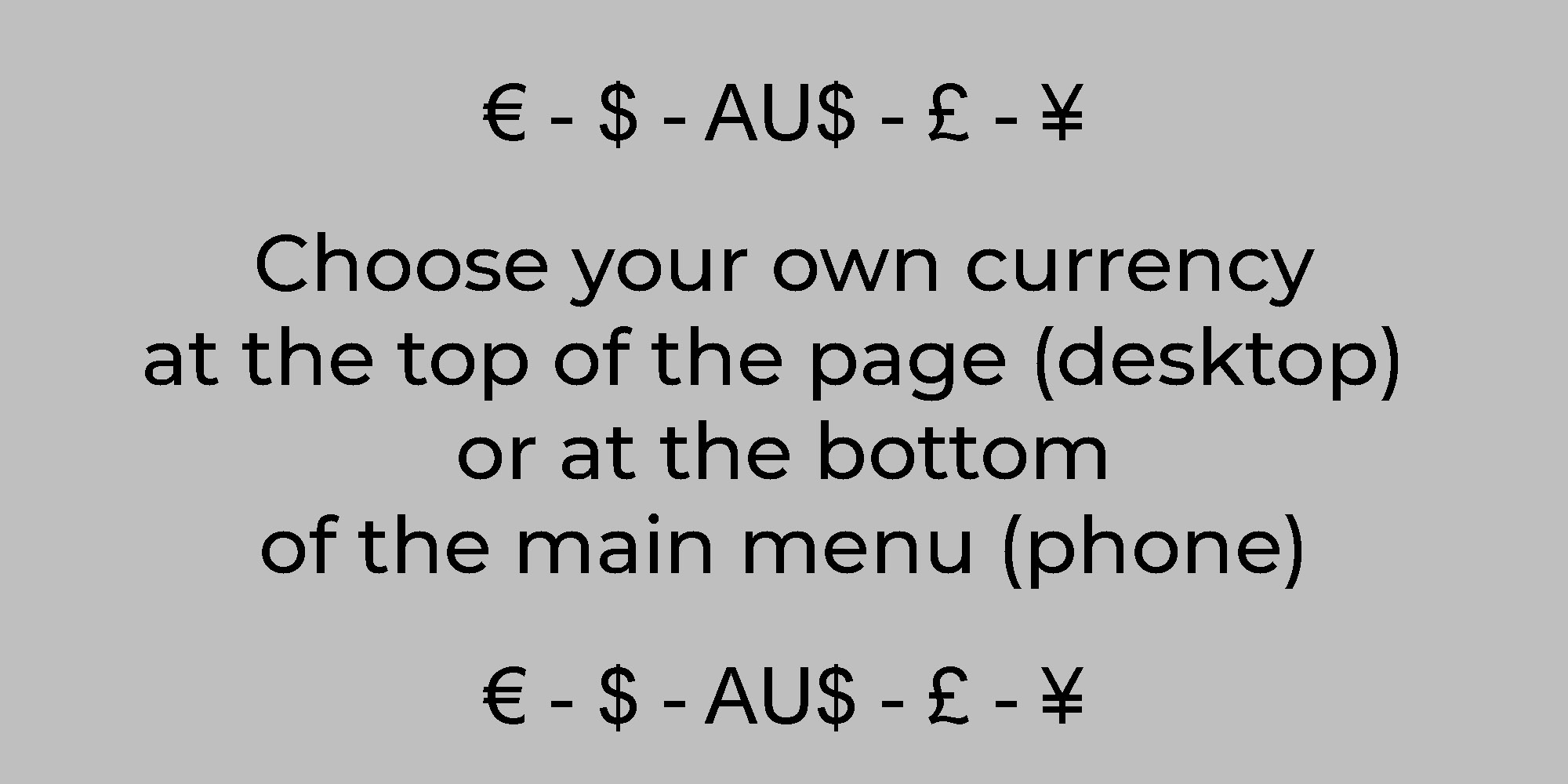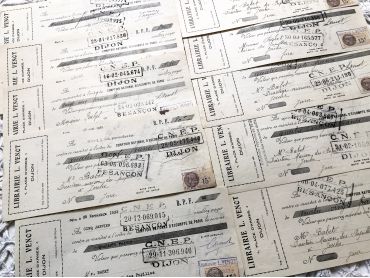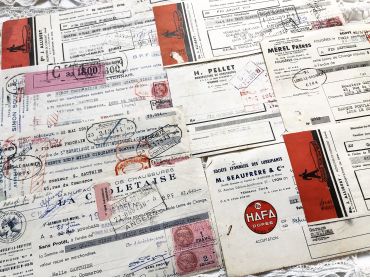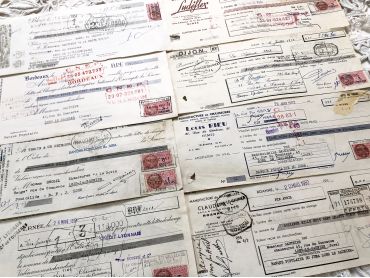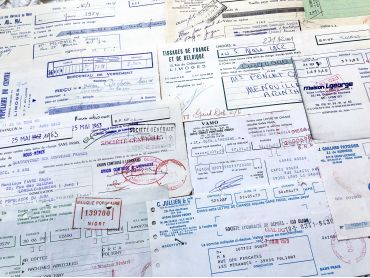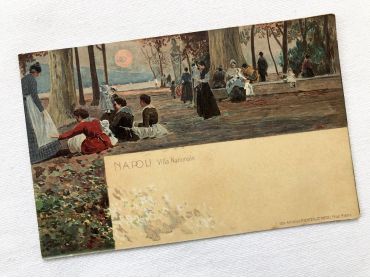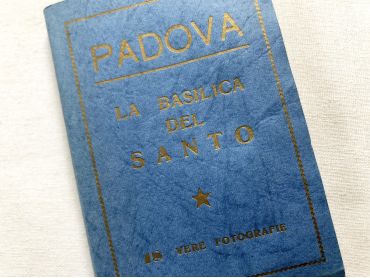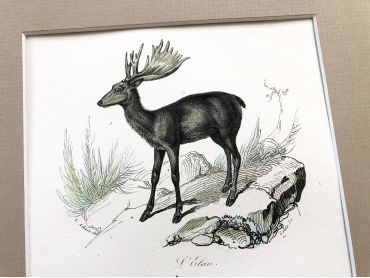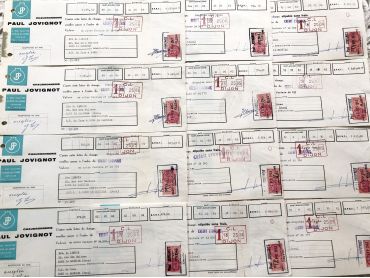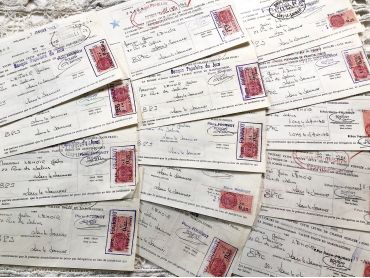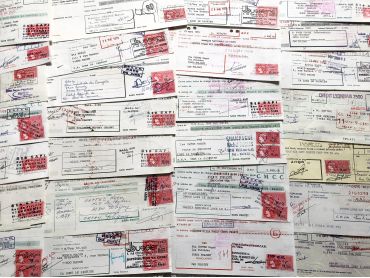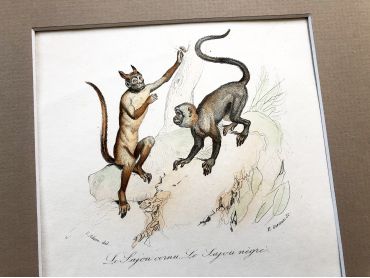Set of 10 French bills of exchange a bookshop of the city...
Set of 10 French bills of exchange a bookshop of the city of Dijon from 1930s with tax stamps and rubber-stamps.
Dimensions: 25 x 10 cm for nine bills et 27 x 10 for the largest.
The last photo shows the back of the bills of exchange.
These bills of exchange are financial instruments for loans between companies. Before the massive arrival of computers, these exchanges were carried out by hand as shown by these documents.

